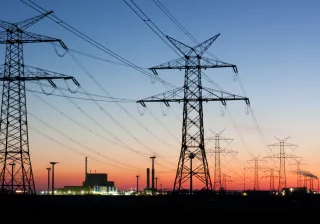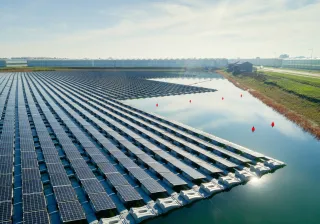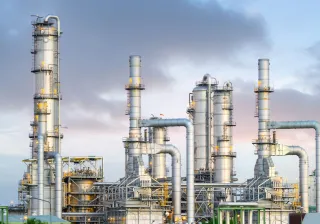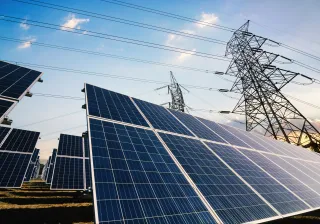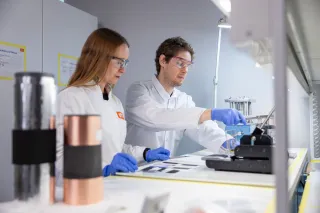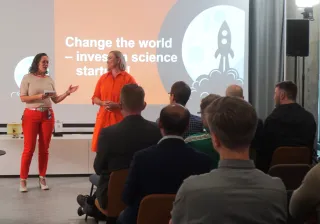Coordinated by the Ministry of Economic Affairs and Employment, different sectors have prepared sector-specific roadmaps for the transition to a low-carbon society in Finland. The aim has been to obtain a clearer understanding of what changes are deemed necessary by the different sectors. Such an approach to the challenge is unique even on a global scale. A summary of the extensive work done to date is available here.
Not all roadmaps contain numerical estimates of the investments required for achieving low-carbon results. In addition, the time span varies from one roadmap to another, and therefore the figures presented cannot be directly aggregated. For example, investment needs related to energy production are not included, even though a large proportion of sectoral activities are based on low-carbon electricity production. In any case, the investment needs presented are substantial, consisting of dozens if not hundreds of billions of euros. In comparison, Finland’s budget for 2021 is EUR 64 billion. As a whole, the common path to carbon neutrality is highly investment-intensive. However, not all investments are made solely for the sake of mitigating climate change, but many investments also have effects that improve production or regenerate business in other ways.
Does the pandemic have a permanent impact on emissions?
When talking about major changes and large sums of money, it is worth noting that nature has been quietly helping the decarbonisation process through the COVID-19 pandemic. The impact of the pandemic on direct emissions through consumption has been more moderate than many would have hoped. The greatest impact has been achieved through transport emissions. It has become clear very quickly that major structural changes are needed throughout society in order to achieve climate targets. Although its direct impact has remained moderate, the pandemic has also caused a major need for economic recovery. Historically significant amounts of money have been proposed to be used for the recovery efforts. Indeed: every cloud has a silver lining! If we use this money wisely from the perspective of low-carbon objectives, we will have unprecedented opportunities to accelerate the change towards a carbon-neutral society.
As far as Finland is concerned, an additional amount of around EUR 3 billion is planned to be allocated through the EU Recovery and Resilience Facility (RRF) by 2026. In the light of Finland’s GDP growth, this is a major investment, as Finland's GDP has increased on average by just under EUR 5.9 billion per year between 2009 and 2019. In the long run, these investments are expected to produce both low-carbon societal structures and new export products for the global market in Finland. However, compared to the scale of investments envisaged in roadmaps, this extensive additional funding is only a fraction of the total amount required.
Carbon neutrality objectives require a significant increase in electricity production
The scale of the transformation is astounding, and not only in the light of economic figures. According to the roadmaps, the energy transition, which is regarded as necessary in order to achieve the carbon neutrality targets, requires the availability of affordable and secure electricity. The sectoral roadmaps suggest that the electrification of society could translate to an increase of 100% in industrial electricity consumption and an increase of 50% in Finland’s electricity consumption by 2050. According to the low-carbon scenario depicted in the preparatory study carried out by the energy industry, the new need for electricity generation capacity corresponds to an annual production of 80 TWh. Electricity is only one part of total energy, but we are still faced with a transformation.
Herein lies one of the challenges of the prerequisites for transitioning to low-carbon energy, or the energy reform. Energy should be simultaneously secure, equitable and accessible, as well as environmentally sustainable. This is the ‘Energy Trilemma’, as the World Energy Council suggests. How can all of these be achieved in the reform, while the demand for electricity is growing and both new and replacement investments are necessary?
In terms of new electricity production, wind power is, in many cases, the cheapest investment already now, but this does not mean that the additions will be free, either. At the same time, the challenge is only exacerbated by a trend in which the combined electricity and heat production is replaced by a separate heat production and different forms of electricity-based heat production. The role of energy storage is emphasised, but we must remember that energy storage is not additional primary energy. Faced with the growing popularity of different chemical storages, energy carriers and cross-sectoral connections, it is also worth keeping in mind the limited nature of affordable electricity. Solutions that are challenging from the perspective of overall efficiency ratios should only be targeted at sectors with virtually very few alternatives.
Accelerating the commercialisation of solutions
It is important to achieve quick impacts in both climate change mitigation and economic recovery. We must therefore make considerable use of existing technologies and solutions. Most of the solutions to achieve carbon neutrality by 2035 are already commercially available. In addition, some new answers are required. To accelerate the development of these technologically viable but not yet commercially available solutions, a shot in the arm is needed as soon as possible in order to quickly deploy them.
For example, in the process industry, it can take over ten years for major solutions to be developed from the laboratory to the commercial market. Funding can significantly accelerate this development. Meanwhile, we must take into account that the fight against climate change will continue beyond 2035. We need research and education at an earlier stage already now to ensure our competitiveness in the future, even though most of the solutions currently in the basic research phase are too late to help achieve the 2035 target.



